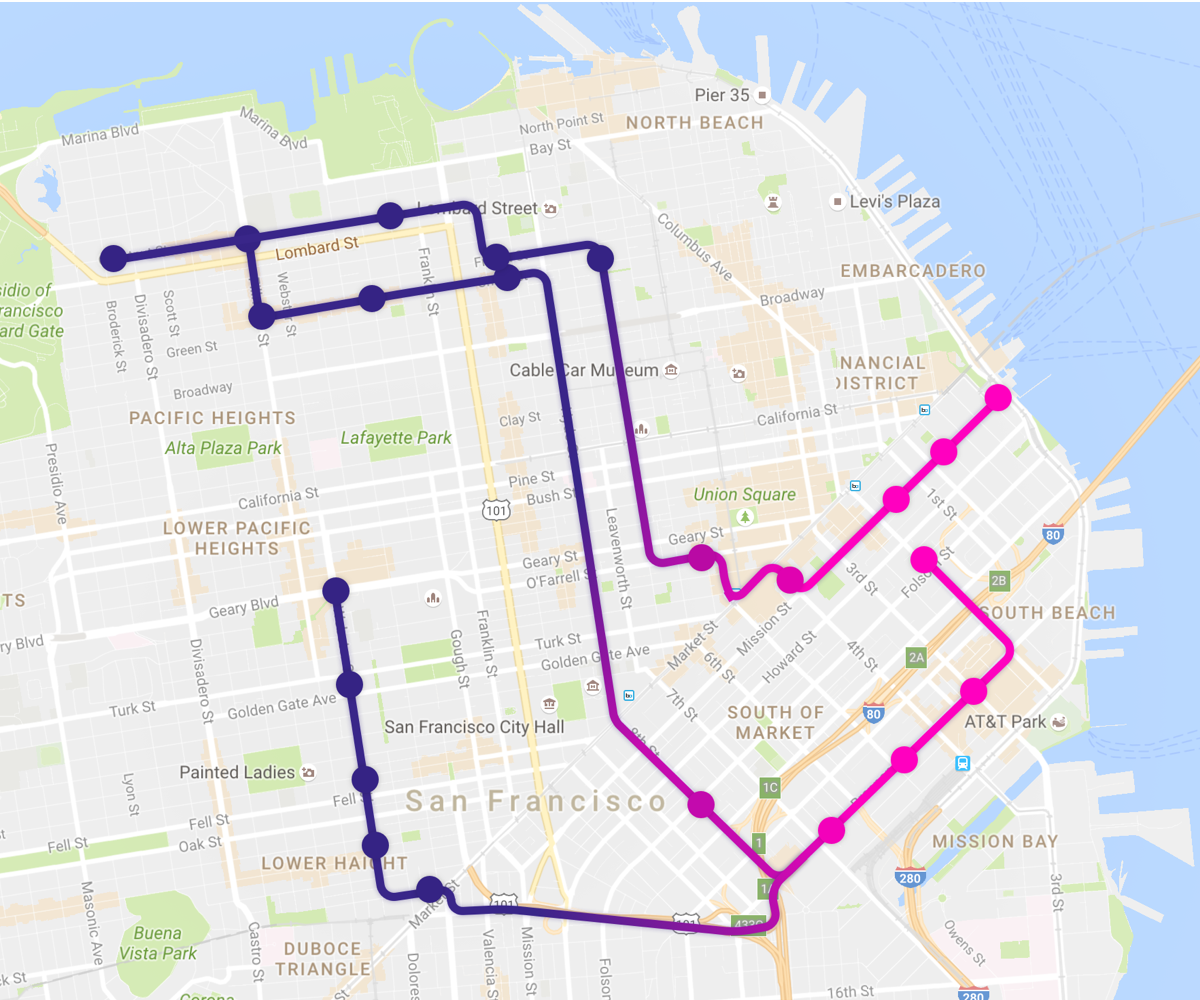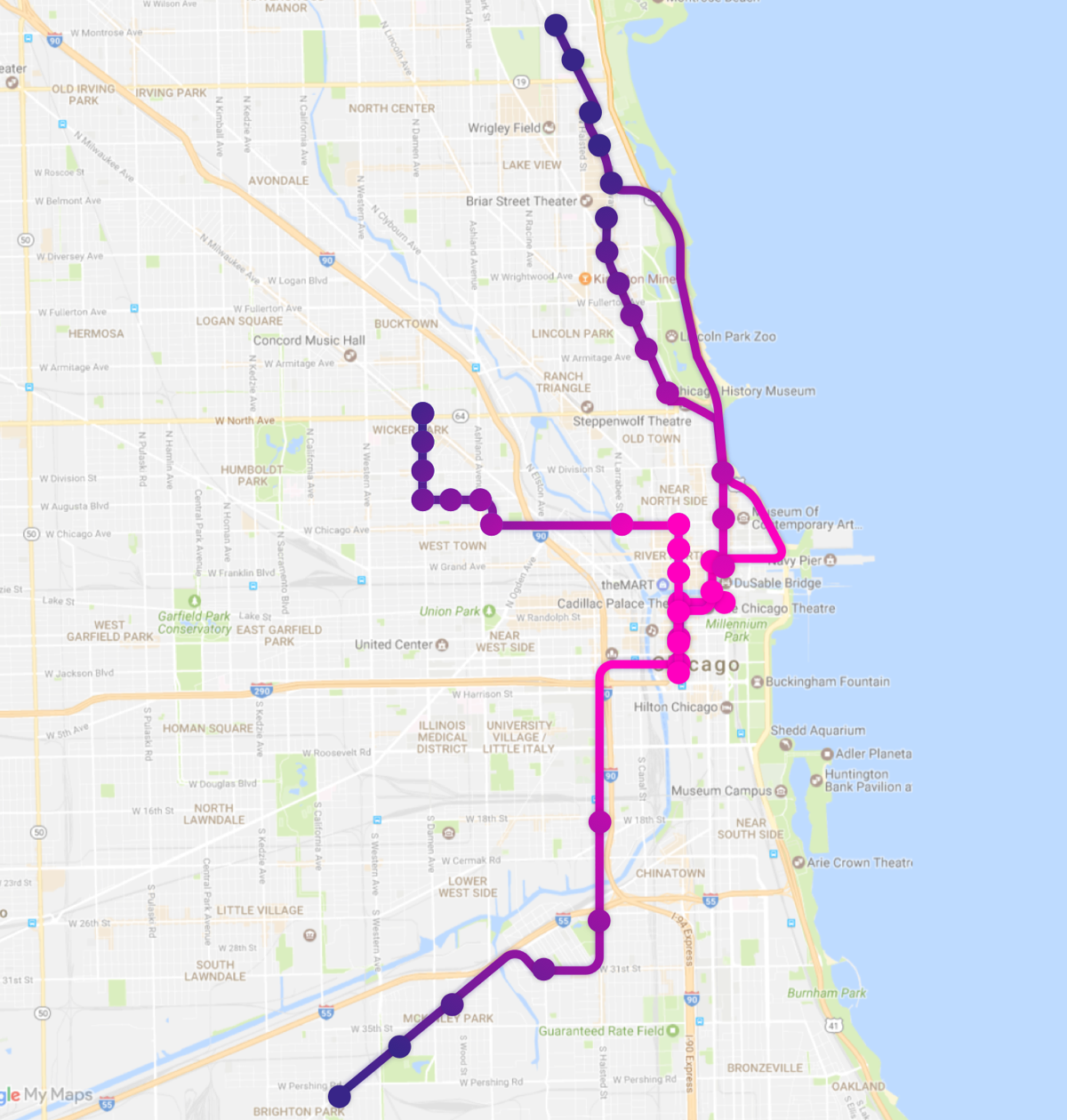Ride-hailing company Lyft unveiled a new feature this week: Lyft Shuttle, a public transit-style service that will run specific routes during rush-hour periods. Lyft will begin testing out the service, an extension of its existing Lyft Line carpooling program, in San Francisco and Chicago soon.
Unlike a typical Lyft or Uber, which can be a more convenient, personable, and (sometimes) more economical transportation option than a cab, Lyft Shuttle seems to be more of a public transit alternative. The program runs from 6:30am to 10am in the mornings, and 4:00pm to 8:00pm in the afternoons, along a fixed route. But do we need another alternative to public transit?
Rush-hour Lyft-ing can certainly be one of the most popular and most expensive times to hail a ride. However, if public transit breaks down, it can become one of the only viable options to get to work on time. During a recent BART outage in San Francisco, for example, ride costs surged from a $10-20 average to $80-100 or more for commuters trying to get from Oakland to the city. Right now, Lyft’s shuttle lines don’t address this particular need, but rather some of the more heavily trafficked neighborhoods and business areas within the city.

Such a public transit alternative could also help alleviate issues in cities where funding for public transit is a problem. According to the Chicago Tribune, Chicago’s CTA needs $13 billion over the next decade to keep its aging stations and rail lines in good repair. In our current political climate, though, that’s looking to be problematic: Trump’s current budget could “starve” Chicago public transit. Private transit such as Lyft Shuttle could help bridge that gap in cities forced to cut back on the number of municipal transit routes and the frequency they’re run.
Of course, Lyft isn’t the first or only company to privatize urban transit. There have, and continue to be, many alternative buses, vans, and shuttles that either run on regular routes or are available for hire. For example, private jitney buses have traversed San Francisco since 1915 (and only recently ceased to run in the city). More recently, in San Francisco and Austin, a company called Chariot has begun offering shuttle services through popular city routes at prices not too much more than public transit rates.

Perhaps, if Lyfts are running regular loops on regular routes, we won’t need quite so many vehicles on city roadways. If people that would normally hail individual vehicles can instead share one, perhaps fewer Lyft and Uber cars will idly roam the streets. In the past, the San Francisco Municipal Transportation Agency (SFMTA) has blamed Uber and Lyft for San Francisco’s worsening traffic conditions.
On the other hand, though, offering such an alternative to buses and subway transit systems could cause problems They could further divide cities already struggling when it comes to racial and economic equality. Why sit on a dingy, packed city bus with the plebes when you can pay a couple bucks more for a peaceful Lyft Shuttle? Undoubtedly, Lyft’s clientele would be largely young and affluent (the average ride-share user makes more than $71,000 per year).
When citizens opt for private transit over public, the city also loses out on much-needed revenue that could go back into revitalizing its transportation systems—systems that other folks solely rely on. The SFMTA doesn’t have any direct comment about Lyft Shuttle, for now. The organization is evaluating how this new service complies with the transit-first standard of its charter.
Currently, Lyft Shuttle is merely a test. Uber tried its hand at a similar public transit-style system in 2015, but it didn’t really take. The conditions could now be right, however, for such a bus alternative to succeed. Public transit is needed but perhaps unable to fulfill the needs of its riders, and a growing percent of the populace is comfortable using a ride-hailing app. If services like Lyft Shuttle can alleviate bus overcrowding while taking drivers off the road, it could definitely be a win, at least in the short term.


